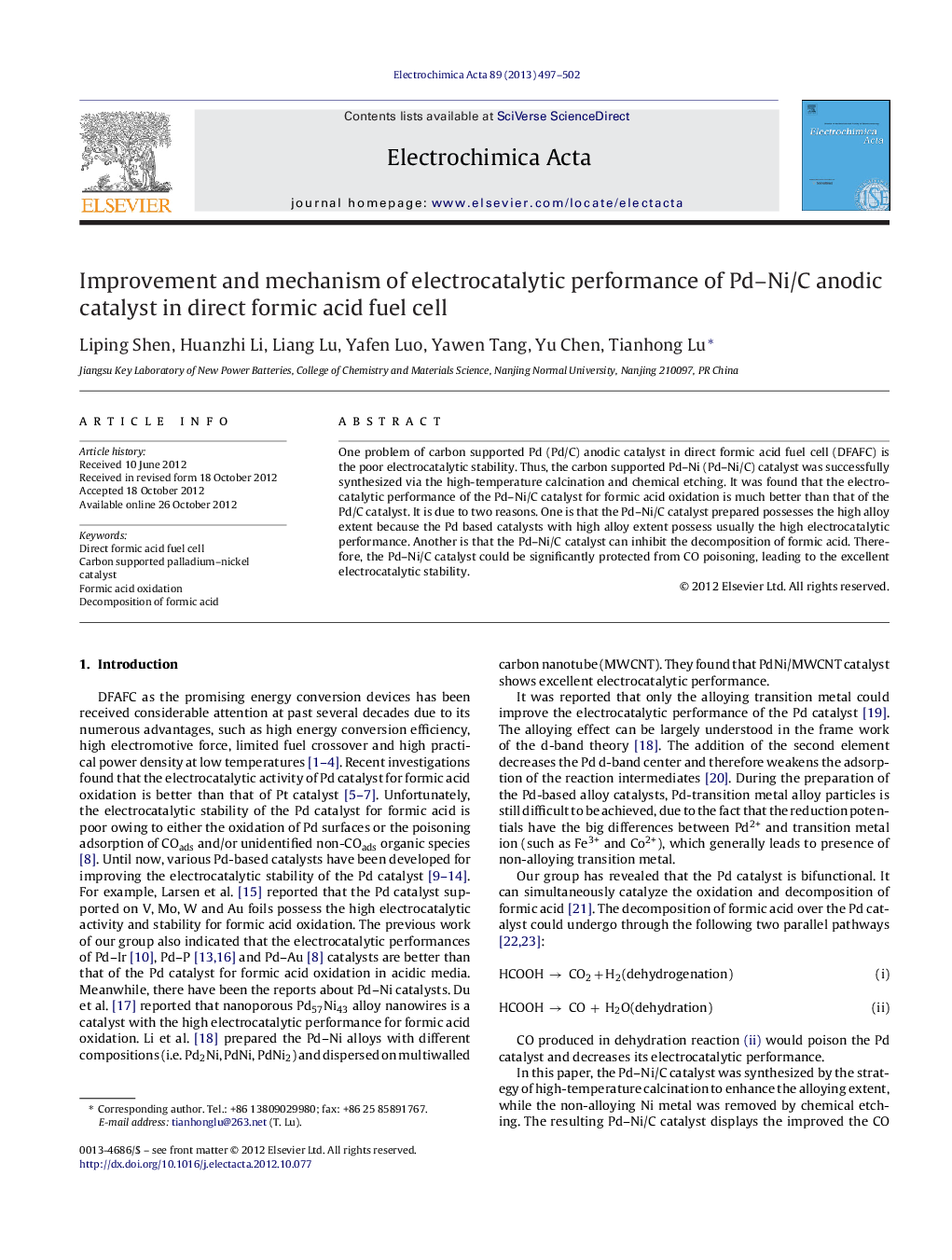| کد مقاله | کد نشریه | سال انتشار | مقاله انگلیسی | نسخه تمام متن |
|---|---|---|---|---|
| 187628 | 459646 | 2013 | 6 صفحه PDF | دانلود رایگان |

One problem of carbon supported Pd (Pd/C) anodic catalyst in direct formic acid fuel cell (DFAFC) is the poor electrocatalytic stability. Thus, the carbon supported Pd–Ni (Pd–Ni/C) catalyst was successfully synthesized via the high-temperature calcination and chemical etching. It was found that the electrocatalytic performance of the Pd–Ni/C catalyst for formic acid oxidation is much better than that of the Pd/C catalyst. It is due to two reasons. One is that the Pd–Ni/C catalyst prepared possesses the high alloy extent because the Pd based catalysts with high alloy extent possess usually the high electrocatalytic performance. Another is that the Pd–Ni/C catalyst can inhibit the decomposition of formic acid. Therefore, the Pd–Ni/C catalyst could be significantly protected from CO poisoning, leading to the excellent electrocatalytic stability.
► Pd–Ni/C catalyst was synthesized via high-temperature calcination and chemical etching.
► Electrocatalytic performance of Pd–Ni/C catalyst is better than that of Pd/C catalyst.
► One reason for good electrocatalytic performance of Pd–Ni/C catalyst is the high alloy extent of catalyst.
► Another reason is that Pd–Ni/C catalyst can inhibit decomposition of formic acid.
Journal: Electrochimica Acta - Volume 89, 1 February 2013, Pages 497–502